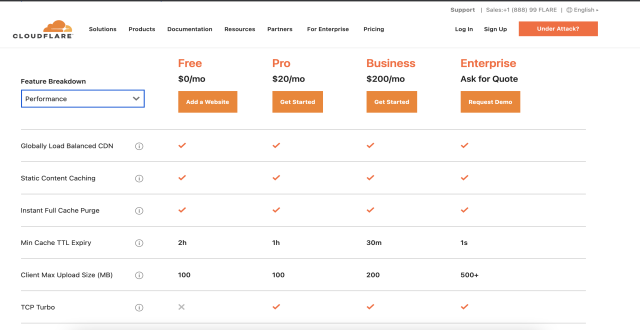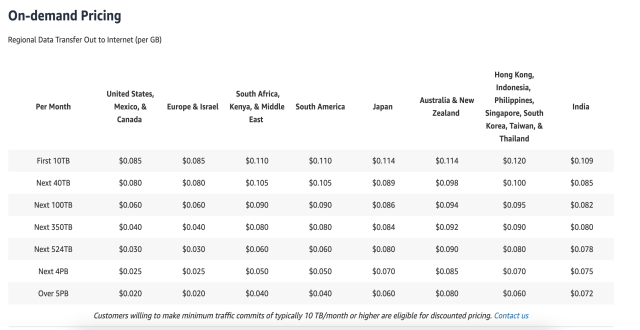What are the different between AWS Cloudfront and Cloudflare?
What are the different between AWS Cloudfront and Cloudflare?
Hello There,
Nowadays every Cloudflare users are changing to AWS CloudFront. may I know what are the unique and important features have AWS CloudFront. if any AWS CloudFront users please share your expressions below.
Hi there,
Here I found a Good article!
Cloudflare and Cloudfront are two services that can help you to speed up your website’s load time. They both work in the same way by distributing server loads across multiple servers, but they have key differences. Cloudflare is a service that offers CDN and DDoS protection as well as a web application firewall (WAF) for its customers while Cloudfront is just a CDN provider with no other added benefits except for accelerating content delivery.
What is a CDN?
“Content Delivery Network” or simply “CDN” is a whole network of computers, servers, and nodes worldwide. You upload your site files to the ‘cloud’ and then this content will be delivered via dedicated server/nodes that are closer to your end-users than the original hosting server.
What are the benefits of using a CDN?
CDNs are a great way to improve your website’s performance. They’ve also been shown in studies to help increase availability for high-traffic websites.
A CDN is an easy and effective way to optimize the delivery of static content like images, videos, CSS files or JavaScript libraries on any web page – without compromising security!
How does Cloudflare differ from Cloudfront?
Cloudflare vs Cloudfront are both excellent services for speeding up web traffic, but they have different specialties. Cloudflare is a CDN (content delivery network) that focuses on security, whereas cloud front specializes in speed optimization.
Cloudflare vs Cloudfront are two services that can help you to speed up your website’s load time. They both work in the same way by distributing server loads across multiple servers, but they have key differences. Cloudflare is a service that offers CDN and DDoS protection as well as a web application firewall (WAF) for its customers while Cloudfront is just a CDN provider with no other added benefits except for accelerating content delivery.
-
Cloudflare is a CDN that acts as a DNS for your website while Amazon Cloudfront operates closer to networks and serves content directly. In other words, Cloudflare works like a proxy whereas cloudfront is an actual server that delivers content from servers closer to end-users for faster speeds and performance.
-
They both provide SSL certificates but in different ways; if you want to use an SSL certificate on a domain you are hosting with Cloudflare, you need to get it from them. On the other hand, SSL certificates obtained via CloudFront can be pointed at Amazon’s ACM.
-
Caches are different: Cloudflare caches content on its servers as close to end-users as possible whereas CloudFront uses S3 buckets to store cached files closer to end-users.
-
CDN: With both providers, your origin is linked up with servers across the world (or within EC2 in AWS) to provide you with better performance. But the way Cloudflare and Cloudfront deliver that content is different because Cloudflare uses multiplexing while CloudFront uses level-3 cache headers.
-
Size of CDN: Another major difference between Cloudflare vs CloudFront is the size of their CDN network: Cloudflare has more than 200 data centers globally while, on the other hand, CloudFront has more than 225 edge locations.
-
The only thing that is common between Cloudflare vs CloudFront is that they both offer good pricing plans for small businesses or start-up websites, so you can choose the best one as per your needs.
-
Another important difference between Cloudflare vs CloudFront is their free basic services which include DNS, origin pull zones, HTTP/2 support, etc. believe it or not but all these things are available for free with any of them.
-
They both serve content from the web to end-users
The technology that powers these services is no different, so what separates Cloudflare and Amazon Cloudfront service? A small but notable difference between the two arises from their origins. One of the original aims for Cloudflare was to provide more protection against DDoS attacks than regular web servers do; this feature has not been part of AWS since inception as it doesn’t need an extra layer to be protected similarly.
Cloudflare is a perfect solution for those looking to protect their site from attacks or speed up their websites by delivering the right files closer to visitors to provide an optimal web experience regardless of location. It also offers many other features such as CDN service (content distribution network) and free SSLs, making it the better choice if you are unsure which one will work best for your needs!
- Another key difference is that Cloudflare is easy to set up and configure, while Cloudfront needs more effort set up.
A key differentiator between Cloudflare and AWS Cloudfront is the time it takes to set up. One can easily establish a hosting plan on Cloudflare in just five minutes while setting one up for AWS Cloudfront often requires more than an hour of configuration, which many people do not have enough patience or technical know-how to go through.
- And lastly, there are some differences in pricing – but they vary depending on your needs and usage patterns so it can be hard to compare apples-to-apples
While both companies serve content delivered via CDN, they offer drastically different plans at varied prices: one offers simple pricing models with fixed amounts guaranteed per month at $20/month or $200+ up-front payment plus bandwidth charges if you go over your quota limit on data transfer whereas another offers more complex pricing models, where bandwidth and usage are priced with variable rates.
Cloudflare Costs: CDN Plans & Prices (data transfer is free)

Cloudflare pricing plans
Amazon Cloudfront costs $0.085 per GB transferred the first 10TB. After hitting the 10TB, each additional GB transmitted will cost $0.080/GB. Note that when using AWS S3 (Simple Storage Service) for storing images on their end to serve users instead of your site’s server, a charge of $0.0004-0.005 per 1,000 requests will apply – regardless of whether you use it for static assets or dynamic resources like video streaming.

Cloudfront Pricing
Which is better for what type of content and why
The best CDN for your website depends on your specific needs, but here are some common scenarios: Streaming video content – If you’re planning to stream live or recorded videos to more than one location, it’s best to use a dedicated streaming service like Amazon CloudFront. Amazon CloudFront has built-in support for playing streaming media files and offers several features that make managing and delivering this type of content easier.
Cloudflare is recommended if you want more control over caching options as well as an easy way to implement SSL. Image sharing sites – If your site makes heavy use of dynamic images (i.e., pictures uploaded by users), a full-featured CDN that offers image optimization tools like CloudFront or other content delivery networks will give you a better overall experience for your users.
Cloudflare also offers a much higher level of control over cache-related options and does not require building or configuring caching software on the server. On the other hand, Cloudfront is faster because it has lower latency due to its edge network topology CDNs in General
As an alternative If you don’t want to go through all that trouble, you can just use the file hosting service that powers your site: Amazon S3 and Amazon Cloudfront. It’s pretty simple to upload files into S3 first then link them up in your website using HTML code instead of relying on a script loading all images/video from another domain (or by a third-party). Amazon Cloudfront is a Content Delivery Network (CDN) service that securely delivers data, videos, or apps to your users with low latency and high transfer speed from a network of global edge locations.
Other considerations when choosing between Cloudflare vs Cloudfront
Amazon S3 and Amazon Cloudfront have been around long enough to be battle-tested under heavy loads. Both AWS services are pretty good at what they do, but Amazon Cloudfront is probably a better choice for most websites now because it’s much cheaper, has more features, and is very easy to set up. If you are expecting to get millions of visits per day from countries all over the world then S3 is still probably your best option (drops in performance are noticeable with both services if your site gets more traffic than what it was intended for).
Cloudflare: They have a free mode where they offer DNS and CDN services but limits on caching and how many requests are served per second. It works great for blogs or smaller websites though, but I wouldn’t use them for any kind of business website because of their limitations.
Cloudflare’s default connection time out is 100 seconds, but if you regularly run HTTP requests that take over 100 seconds to complete (for example large data exports), it will cause error 524: a timeout occurred. You need to move those processes behind a subdomain not proxied in the Cloudflare DNS app.
Cloudflare’s error page is not helpful for troubleshooting errors. If your site is under development, you should avoid using them to detect issues because their error pages will return the HTTP status code instead of pointing towards where there might be a problem with your website when accessed through Cloudflare.
If you’re looking for a CDN service that can handle traffic spikes, improve your website speed and performance, or just give you peace of mind knowing your site is safe from hackers then we recommend checking out Cloudflare and Amazon’s Cloudfront. Both services offer free trials to get started so it doesn’t cost anything to see which one works best for what type of content on your website. So stop worrying about how fast your site loads—just find the right CDN for your needs and make sure it’s always running at peak capacity with a solid cloud hosting plan!

Great source sharing.